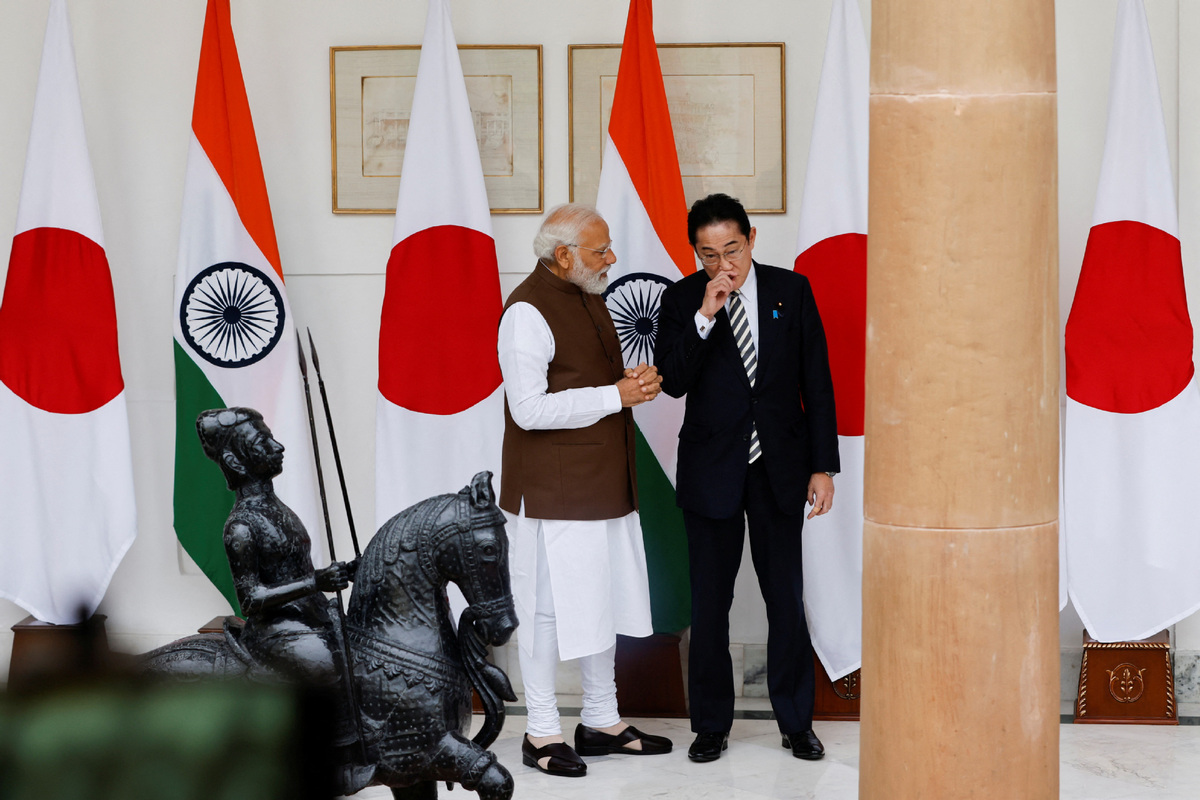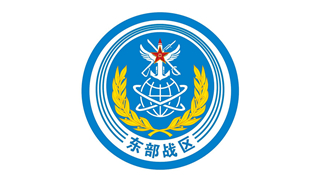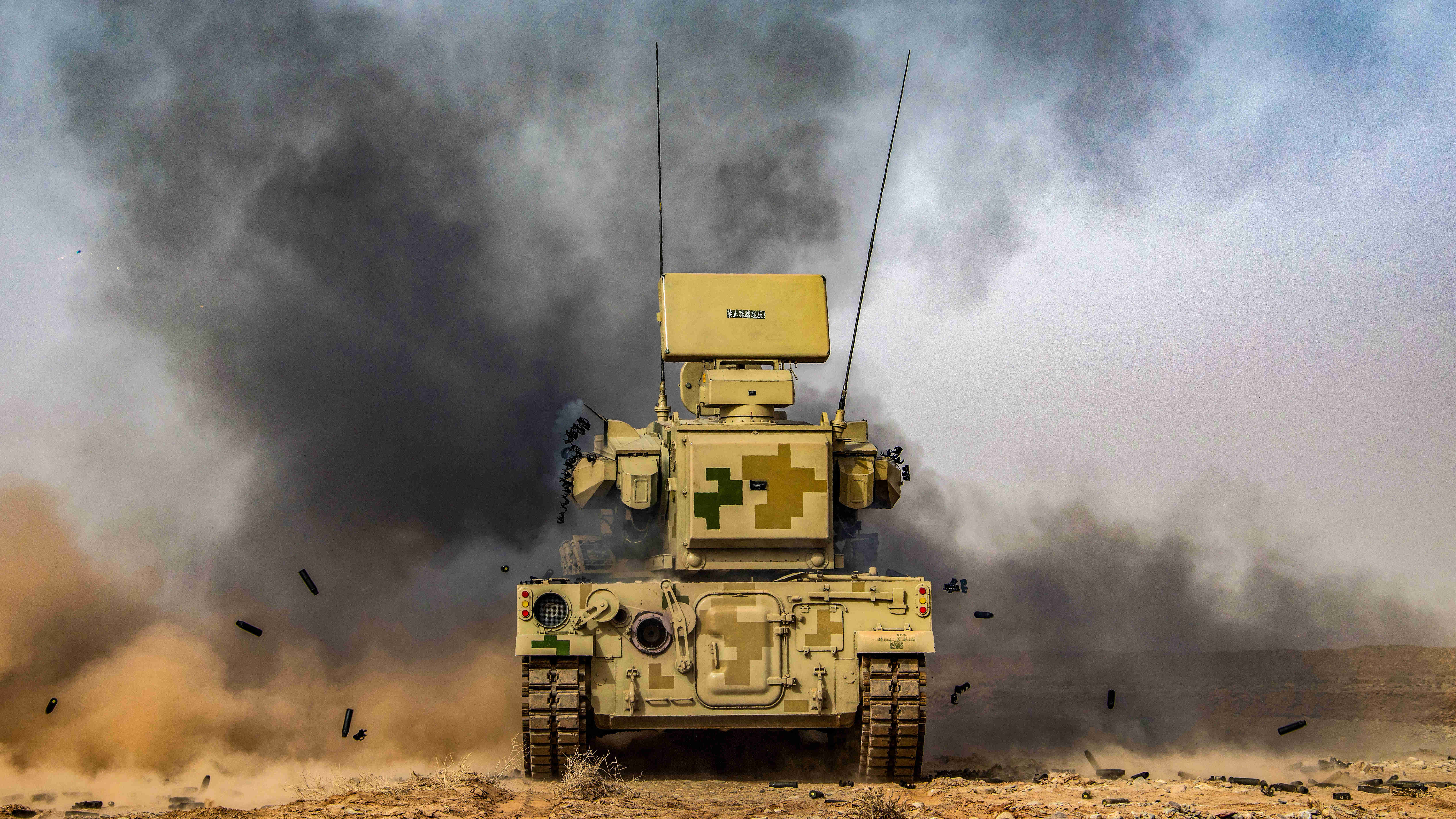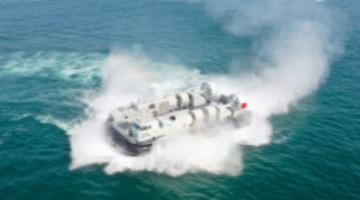
Indian Prime Minister Narendra Modi and Japan Prime Minister Fumio Kishida talk before their meeting at the Hyderabad House in New Delhi, India, March 20, 2023. [Photo/Agencies]
Japanese Prime Minister Fumio Kishida started a two-day visit to India immediately after his meeting with German Chancellor Olaf Scholz in Tokyo on Saturday. He had earlier met with Republic of Korea President Yoon Suk-yeol on Thursday. His busy diplomatic schedule would not be in the spotlight to such an extent if these meetings were meant to promote peace and development in the region.
However, there is no secret that Japan's diplomatic moves are part and parcel of the "Indo-Pacific" strategy of the United States to contain China.
By talking about China's "assertiveness in pressing its maritime territorial claims", Kishida tried to make the case that "China poses a threat" not only to Japan's security, "but also to the region".
That this is just a verbatim regurgitation of Washington's line exposes the strings being pulled behind Japan's moves.
With such a pretext, Japan is trying to kill two birds with one stone: act as a gun of the US in its strategy to contain the rise of China and thus strengthen its own influence in the region, and also to justify its moves to expand its military capability.
Japan's defense budget for 2023 will be $51.4 billion, a 20-percent increase over that of the previous year, and its spending on defense will double in the next five years, according to the Japanese government.
The Kishida government has also announced a plan to purchase 400 Tomahawk cruise missiles from the US as part of its plan to bolster the "preemptive strike" capability of the Japan Self-Defense Forces.
It goes without saying that Japan is accelerating its efforts to jettison Article 9 of its Constitution with the excuse that the country faces the "most severe and complex security environment since World War II".
The irony is that it is Japan's own military expansion and its willingness to act as an accomplice of the US geopolitical strategy that have become the leading source of instability in the region.
Given what the militarist Japan did to its neighbors before and during World War II, Japan's regaining of military capability far beyond the needs of its self-defense undoubtedly poses a threat to regional peace and stability.
Japan is due to host the G7 Summit in Hiroshima in May, and Kishida's busy diplomatic activities are meant to raise Japan's profile as a major power.
There is nothing wrong with Japan harboring the ambition to be a bigger player on the world stage. But that does not mean it needs to expand its military capability for that purpose. Nor is it necessary for Japan to act as a pawn of the US in the latter's geopolitical strategy.
What the Kishida government is doing only points to the fact that it is doing nothing to promote peace and development in the region. Instead, it is acting as a bridgehead for forces from other parts of the world, including NATO, to interfere in the affairs of Asia.









